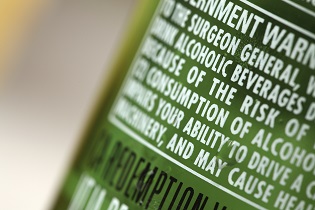Have a Plan Before Taking that First Drink

Having a plan that includes a designated driver, a taxi or ride share, or an overnight stay at a friend's home just might save a life. Just a single drink can cause a decline in visual function, mental judgment and motor skills, resulting in driver impairment.
In the 1980s, the United States saw a significant reduction in alcohol-involved crashes due to lowering the legal driving limit to 0.08 blood alcohol concentration, increasing the minimum legal drinking age to 21 and instituting educational campaigns about the dangers of drinking and driving.
However, in the decades since, drivers with alcohol concentrations at or above 0.08 have remained involved in about one-third of all traffic fatalities in the U.S. That's about 10,000 lives lost every year.
To reduce this toll, the National Safety Council supports:
● A national campaign educating Americans on impairment beginning with the first drink
● Efforts by states to lower the legal limit for blood alcohol concentration in drivers
The legal alcohol concentration limit in all states is 0.08. Research shows that for the majority of drivers, driving performance deteriorates significantly at this level.
However, the current U.S. culture regarding driving and alcohol is not supportive of lowering driving limits for all adult drivers. And despite drivers' views of drinking and driving as a very serious threat, more than one in eight drivers admit to driving in the past year when they thought they were close to or over the legal limit.
NSC knows more must be done to educate our fellow citizens about alcohol impairment, and we believe change can happen as people know more. A strategy grounded in human behavior theory is needed to change those beliefs and ultimately influence widespread change.
Read the NSC Low Alcohol Concentration National Culture Change policy statement. It includes data, scientific evidence of impairment at low levels and background.
December is National Impaired Driving Prevention Month
Weekends and holidays can be dangerous times on our roadways. Two of the most celebrated days of the year, Christmas Eve and New Year's Eve, also are among the most deadly. That's why December has been recognized as National Impaired Driving Prevention Month. Taking personal responsibility for a safe ride saves lives.
Alcohol is Only One Cause of Impaired Driving
Drugs — including opioids, marijuana and some over-the-counter medicines — can impair driving by causing drowsiness, altering visual functions and affecting mental judgment and motor skills. Other factors, such as fatigue and stress, also can impair your ability to drive.
Drivers should avoid driving while impaired by any of these factors, just as they would if they consumed alcohol. To learn more about the many causes of impairment, visit nsc.org/impairment.

